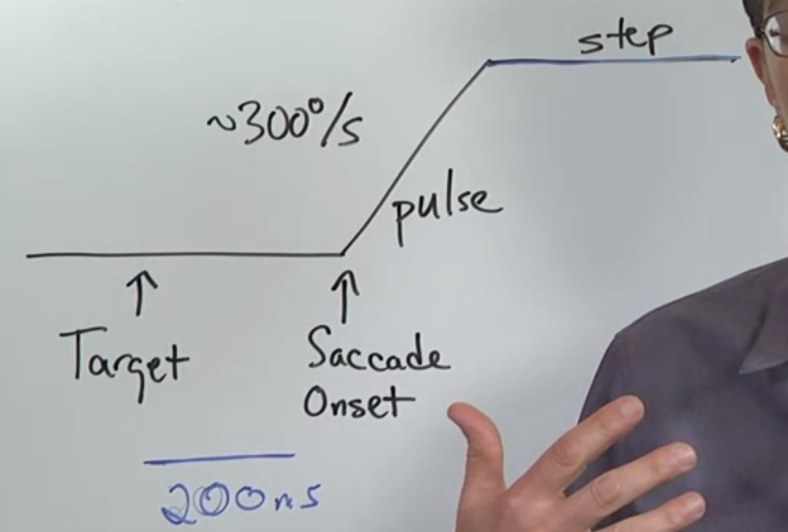Saccades: The ballistic eye movements for gaze shifting
This lecture dives into saccades, the rapid eye movements responsible for shifting our gaze around the world.
-
VOR Cancellation and Saccades: Effective saccades require cancelling the VOR (vestibulo-ocular reflex) to prevent compensatory eye movements during head turns.
-
Characteristics of Saccades:
- Ballistic movements: Once initiated, saccades cannot be corrected mid-flight, similar to a bullet fired from a gun.
- High velocity: They can reach speeds of 300-400 degrees per second.
- Short duration: Lasting only milliseconds (around 200ms after target detection).
- Two components:
- Pulse (rapid movement): Quickly shifts the eye to the target location.
- Step (holding position): Maintains fixation on the new target.
-
Functions of Saccades:
- Scanning the environment: Saccades allow us to explore our surroundings by rapidly shifting gaze between different points of interest.
- Visual processing: Micro-saccades (tiny, involuntary saccades) help prevent visual fading by constantly refreshing the retinal image.
- Clinical applications: Analysing saccadic patterns can provide insights into various neurological conditions. For instance, healthy individuals tend to focus on the eyes and mouth during face processing, whereas individuals with certain disorders might fixate more on the nose or show different gaze patterns depending on facial expressions.
-
Next Lecture: The lecture will explore the brain circuits responsible for generating saccades.
 Saccade Circuits
Saccade Circuits